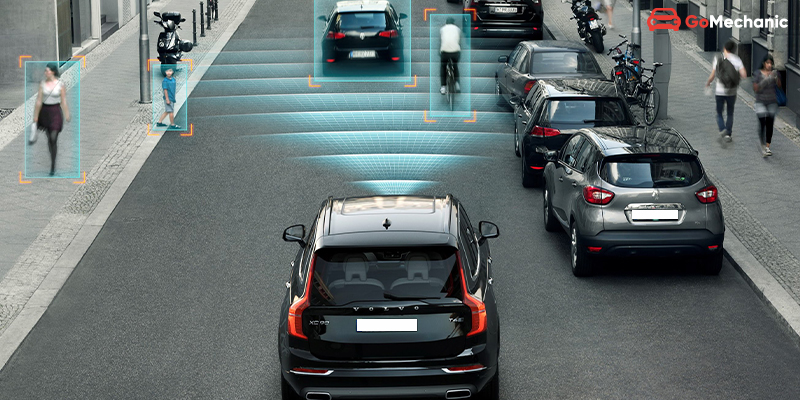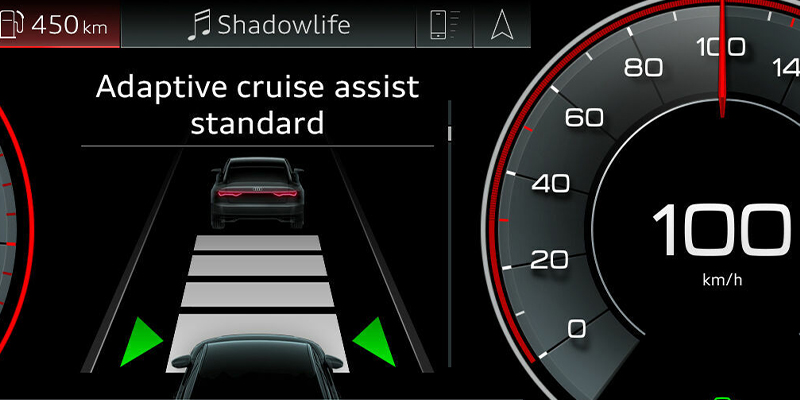The evolution of Cross-Traffic Alert (CTA) systems represents a significant leap forward in Car safety. These systems, equipped with advanced sensors and technologies, play a critical role in mitigating collisions and enhancing driver awareness, especially in situations with limited visibility.
Introduction: Cross-Traffic Alert System
- LiDAR for Cross Traffic Alerts: Supplementing traditional ultrasonic and radar sensors, LiDAR offers superior object detection, overcoming previous limitations in sensor technology.
- Functionality of the CTA System: Engaging when the vehicle is in reverse, CTA systems utilize a combination of sensors, radar, and cameras to scan for and alert drivers to approaching vehicles or pedestrians, thereby preventing potential reverse collisions.
Importance of Cross-Traffic Alerts in Car Safety
- Enhanced Safety: CTA systems significantly reduce crash risks by alerting drivers to unseen hazards.
- Enhanced Awareness: Acting as an additional set of eyes, CTAs improve situational awareness, aiding in safer driving decisions.
- Accident Prevention: Early warnings from CTAs afford drivers more reaction time, potentially averting accidents.
- Driver Confidence: CTA systems bolster confidence by providing assistance in navigating complex driving environments.
- Complements Safe Driving: Designed to supplement vigilant driving practices, not replace them.
How Cross-Traffic Alert Systems Work
- Activation and Detection: Utilizing radar, ultrasonic sensors, or cameras, CTAs detect approaching hazards when the vehicle is in reverse.
- Alert Mechanisms: Drivers are notified of detected risks via auditory, visual, or tactile alerts.
- Integration with Safety Features: Some CTAs are part of a broader safety suite, including automatic emergency braking, enhancing overall vehicle protection.
- Effectiveness: The scanning effectiveness of CTAs, which varies by environment, is generally more reliable in less congested areas.
- Future Developments: Innovations include front cross-traffic alerts, improving safety at intersections.
Sensors and Technologies Involved

- Radar Sensors: Emit radio waves to detect distant objects, functioning effectively in various weather conditions.
- Cameras: Capture real-time visuals, integrated with software for detailed hazard analysis.
- Ultrasonic Sensors: Ideal for parking and slow-speed movements, detecting close-range obstacles.
Key Advancement in Cross-Traffic Alert Technology
- Integration of Radar and Cameras: The early 2000s saw this pivotal integration, forming the foundation for today’s ADAS features.
- Blind Spot Monitoring: Enhances safety by alerting drivers to vehicles in blind spots.
- Expansion to Front Cross-Traffic Alert: Broadening protection scope, newer vehicles now feature systems alerting to frontal hazards.
Impact of AI and Machine Learning
Artificial Intelligence (AI) and Machine Learning (ML) have significantly improved CTA systems’ accuracy in detecting hazards, reducing false alarms, and enhancing driver trust. This technology enables systems to adapt to human perceptual abilities, making them more intuitive and reliable.
Integration with Other Safety Features

- Blind Spot Detection (BSD) and Automatic Emergency Braking (AEB) work in concert with CTA systems, forming a comprehensive safety network that not only warns but actively intervenes to prevent collisions.
- Adaptive Cruise Control (ACC) complements CTAs by adjusting vehicle speed in heavy traffic or approaching junctions, further enhancing collision avoidance mechanisms.
Challenges and Future Directions
The future of CTA systems promises enhanced sensor technology with LiDAR integration and 360° sensor coverage for eliminating blind spots and improving object recognition and threat assessment through AI and ML. Integration with V2X communication and other driver assistance systems will advance real-time hazard detection. Challenges include ensuring data security, preventing driver distraction, and achieving standardization for broad compatibility.
Real-World Applications and Case Studies
- Volvo’s City Safety: This system exemplifies the effectiveness of CTA in urban settings, significantly reducing rear-end collisions.
- Ford’s BLIS with Cross: Traffic Alert: Demonstrates the utility of CTA in crowded parking scenarios, enhancing driver confidence and reducing collision risks.
Standardization and Consumer Guidance
Government and industry bodies play a vital role in standardizing safety features like CTAs to ensure reliability and encourage widespread adoption. Consumers should consider system integration, sensor types, customization options, and reliability among other factors when choosing a vehicle equipped with CTA capabilities.
Also Read: Car Features that we want in Indian Cars
Conclusion
The evolution of Cross-Traffic Alert systems represents a critical advancement in automotive safety technology. As these systems become more sophisticated through the integration of advanced sensors, AI, and machine learning, and further harmonized through industry standardization, they offer the promise of significantly reducing accidents and enhancing driver confidence and situational awareness.
The continuous development, alongside integration with broader safety features and addressing existing challenges, will be pivotal in realizing the full potential of CTAs in contributing to safer driving experiences.





